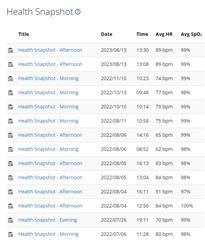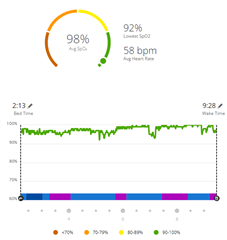Hello to everybody,
I bought the watch 4 months ago primarily to assess saturation during high altitude climbing. Surprisingly on repeated attempts my SpO2 during resting at sea altitude was 92%?? This reading actually indicates light-moderate level of hypoxia which, in given situation is false. BTW the measurement was done by the book. Simultaneous fingertip measurement on another device gives 98%.. 6% difference is actually coarse mistake that renders this function unusable. Therefore I would suggest Garmin to stop advertising this function and remove it from firmware. Or use more reliable sensor and firmware in coming models so that it shows the actual values.





